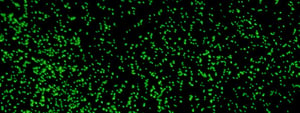© Cover image www.jamstec.go.jp
They are a hundred thousand years old, although they don’t show it: for all these years they were “stuck” in the depths of the ocean. But then they demonstrated their readiness to restart their lifecycle, feed and reproduce, as soon as the opportunity presented itself. That is just what they did when researchers from the Japan Agency for Marine-Earth Science and Technology (JAMSTEC) and the Graduate School of Oceanology of the University of Rhode Island extracted them from the Pacific Ocean and put them in the right laboratory conditions. These are the microorganisms found by the specialized drillship JOIDES Resolution in sediment 100 meters below the seafloor and nearly 6,000 meters below the ocean’s surface.
Marine sediment is made up of various layers, which form over time (they reach, on average, a height of one/two meters every million years). Several layers are created by the decomposition of a large number of different types of organisms, others from their droppings, together with different kinds of sand, materials from underwater eruptions, ocean currents and much more. The goal of the researchers was to check if there were any traces of oxygen in the sea floor. In fact, they discovered that oxygen was present in all of the sediment core samples. However, as reported in the scientific journal Nature Communications, they found a lot more than just this: they found traces of microorganisms (bacteria and others) in deposits that were no less than 101.5 million years old, several of which were dead, but the large majority of which (99.1%) were still alive. The researchers transferred the sediment they had extracted to the laboratory and, using highly-advanced procedures, recreated environmental conditions adapted to very slow lifecycles, like those of these microorganisms, which are accustomed to prohibitive conditions.
The attempts to “revive them” were successful, because the almost 7’000 microbes found in the marine sediment had all the typical characteristics of living organisms. They multiplied (their number increased four times in 68 days) and fed themselves with measurable organic materials, which were marked by the researchers with radioactive carbon. In contrast, only a part of them, consisting of anaerobic microorganisms (i.e. those that live without oxygen) showed a very limited ability to be revived.
“Our main question was whether life could exist in such a nutrient-limited environment,” said the paper’s lead author Yuki Morono, senior scientist at JAMSTEC. “And we wanted to know how long the microbes could sustain their life in a near-absence of food.”
“We knew that there was life in deep sediment near the continents where there’s a lot of buried organic matter,” added URI Graduate School of Oceanography professor and co-author of the study Steven D’Hondt. “But what we found was that life extends in the deep ocean from the seafloor all the way to the underlying rocky basement.”
The researchers will now attempt to analyse these microorganisms in order to assess how dangerous they can be, but also their biological characteristics, which could help us to find new drugs and treatments


